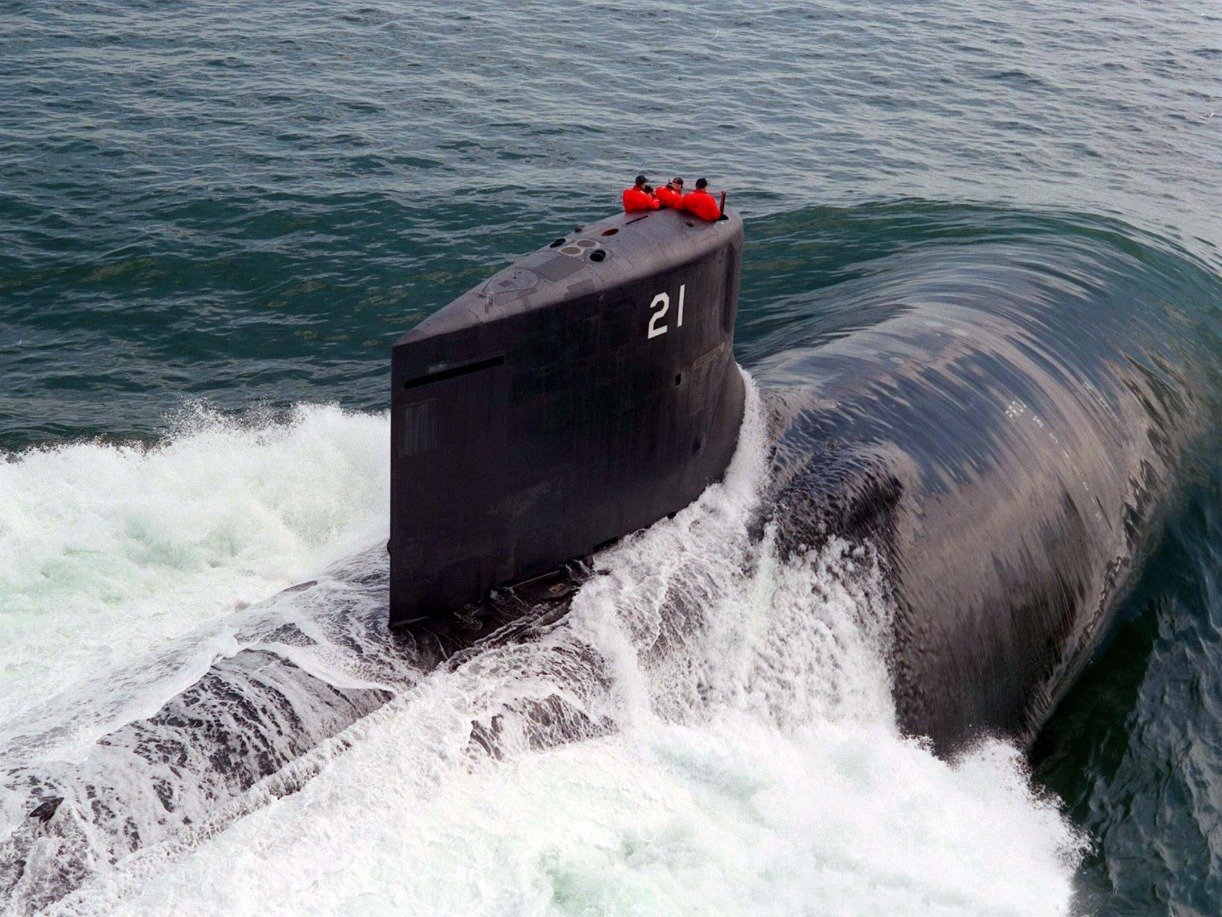The U.S. Navy Seawolf-Class Submarine Is Almost 'Undetectable'
America's Seawolf-class submarines are among the most advanced and stealthy in the world, originally designed to counter the Soviet submarine threat during the Cold War.
Summary and Key Points: America's Seawolf-class submarines are among the most advanced and stealthy in the world, originally designed to counter the Soviet submarine threat during the Cold War.
-Equipped with a pump-jet propulsor for quieter operation and capable of high speeds, these subs are nearly undetectable.
-They feature advanced sonar systems and powerful armaments, including Tomahawk missiles and guided torpedoes. Unfortunately, only three were built, and one, the USS Connecticut, was severely damaged after crashing into an undersea mountain.
-This leaves the U.S. Navy with just two operational Seawolf-class submarines, a concerning situation amid growing global tensions.
America's Stealthiest Submarines: The Powerful Seawolf-Class
America’s Seawolf-class submarines are some of the most advanced subs in the world. They were built to counter the advancing Soviet submarine threat during the last decade of the Cold War.
While all submarines are meant for covert, undersea warfare, some are better at the covert part than others. The Seawolf class is the best of all.
Not only can it stealthily deliver special forces operators to a distant target, but it can quietly tap into undersea communications cables.
These subs come equipped with a feature known as a pump-jet propulsor, which uses a ducted propeller to generate thrust. This design allows for quieter operation and higher speeds compared to traditional propeller systems on lesser classes of submarine.
Flank Speed for Seawolf-Class Submarine
Seawolf-class submarines can travel at 25 knots (around 35 miles per hour) using what is known as “flank speed.” This speed setting on the Seawolf-class submarine refers to the maximum power setting for the propulsion system.
While at flank speed, the Seawolf class can quickly respond to threats, evade enemy vessels, and carry out missions including intelligence-gathering, surveillance, and reconnaissance.
In addition to their high speed, Seawolf-class submarines are designed to be extremely quiet, making them difficult to detect by enemy sonar systems. This combination of speed and stealth makes the Seawolf-class sub a unique and frightening foe in the underwater domain.
Seawolf-class submarines have a submerged displacement of 9,137 tons (12,139 tons for USS Jimmy Carter, which is a specialized variant of the Seawolf-class), and a length of approximately 353 feet. They are equipped with advanced sonar systems, such as the AN/BSY-2, which is considered one of the most advanced sonar systems in the world.
Seawolf-class submarines have eight 26.5-inch torpedo tubes, which can be used to launch a variety of weapons including Tomahawk land attack cruise missiles, Harpoon anti-ship missiles, and Mk 48 guided torpedoes.
When Three Just Aren’t Enough
Sadly, there are only three submarines in the Seawolf class.
Originally, the Navy envisioned a fleet of 29. Budgetary constraints, technical complications, and the lack of a near-peer rival at the time of their development kept the numbers low and left the submarines overworked.

A Crisis at Sea: the Connecticut Tragedy
One of these submarines, USS Connecticut, crashed into an undersea mountain while on a mission off the coast of Hainan Island in the South China Sea.
The submarine tore up its front and had to go limping back to port, where it will remain under repair until at least next September. Given the state of American shipyards, it could well be out of commission even longer.
Thus, the U.S. Navy now has only two of these essential subs at its disposal, all as the world system spins wildly out-of-control.
Author Experience and Expertise: Brandon J. Weichert
Brandon J. Weichert, a National Interest national security analyst, is a former Congressional staffer and geopolitical analyst who is a contributor at The Washington Times, the Asia Times, and The-Pipeline. He is the author of Winning Space: How America Remains a Superpower, Biohacked: China’s Race to Control Life, and The Shadow War: Iran’s Quest for Supremacy. His next book, A Disaster of Our Own Making: How the West Lost Ukraine, is due October 22 from Encounter Books. Weichert can be followed via Twitter @WeTheBrandon.
All images are Creative Commons or Shutterstock. All photos are of various submarine styles.
From the Vault
Russia Freaked Out: Why the U.S. Navy 'Unretired' the Iowa-Class Battleships
Battleship vs. Battlecruiser: Iowa-Class vs. Russia's Kirov-Class (Who Wins?)


